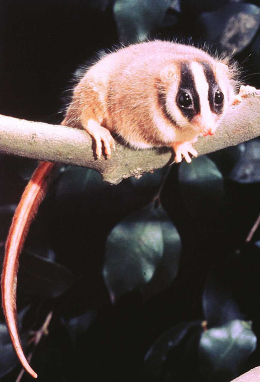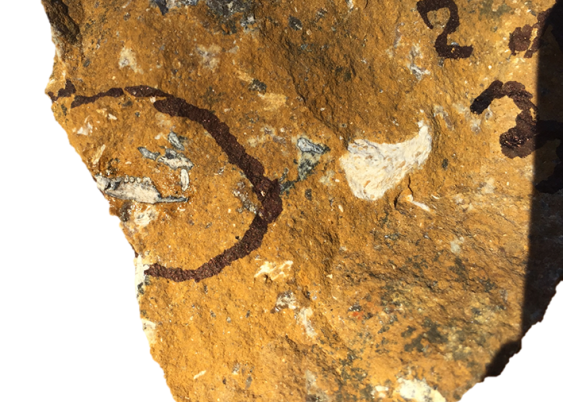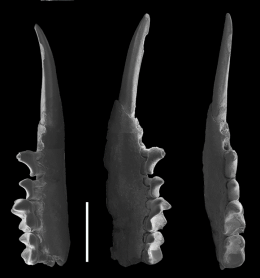Feather-tailed possums in New Guinea were originally Aussies: fossil study
Analysis of Riversleigh fossils reveals fascinating new facts about a tiny possum’s ancestors.
Analysis of Riversleigh fossils reveals fascinating new facts about a tiny possum’s ancestors.

Scientists have long known that the miniature feather-tailed possums in Australia and the island of New Guinea – members of the marsupial family Acrobatidae – were evolutionary cousins, but where they started their long evolutionary journey has been a bit of a mystery – until now.
According to recently published research in Alcheringa: An Australasian Journal of Palaeontology, palaeontologists from UNSW Sydney say the modern-day animals on either side of the Torres Strait came from common ancestors in Australia before diverging into their living gliding and non-gliding descendants, known as Acrobates pygmaeus in Australia and Distoechurus pennatus in New Guinea.
Professor Mike Archer from UNSW’s School of Biological Earth and Environmental Sciences says that in an analysis of extinct species found at Riversleigh World Heritage Area fossil deposits in north-western Queensland revealed that ancestors of both groups of possums were present in Australia by at least 25 million years ago.
“As Riversleigh started revealing its prehistoric treasures, we discovered four different species of feathertail possums, the first ‘deep-time’ fossil record known for the whole family,” he says.
Lead author Prue Fabian was able to unravel the Riversleigh story about this extraordinary group of possums in her honours year.
“Not much was known about these species in the fossil record and how they related to their modern-day descendants,” she says.
“Not only did we find two new species related to the Australian feathertail gliders, the species of Acrobates, but more surprisingly, two new species related to the New Guinean modern-day feather-tailed possum, Distoechurus pennatus.”

The New Guinean feather-tailed possum, Distoechurus pennatus, never developed gliding. Photo: UNSW Sydney
This confirms, says Ms Fabian, that the Distoechurus possums didn’t originate in New Guinea as was once thought, they actually originated in Australia before moving north to New Guinea.
“That’s one of the many great surprises that the Riversleigh site continues to churn out for new generations of palaeontologists,” Ms Fabian says. “And I don’t doubt it will continue to inspire generations to come – which is one of the reasons I named one of the extinct species Acrobates magicus, in honour of Mem Fox’s Possum Magic.”
Millions of years ago, these ancestral feather-tails lived in a very different continent than the one we know today. For one thing, says co-author Emeritus Professor Suzanne Hand, New Guinea was largely underwater. “At most, New Guinea consisted then of a collection of small, low-lying islands,” she says.
“New Guinea has only risen to the heights it is now over the last 12 million years. And sometime after that mountain-building began, animals from Australia were able to colonise that emerging northern portion of the Australian continent which became New Guinea.”
The discovery that the possums originated in Australia before migrating to New Guinea follows similar discoveries about other marsupials that occur in the rainforests of New Guinea as well as Australia, like striped possums and cuscuses.

A rock from Riversleigh showing the fossilised teeth (left edge) of an ancestor of the feather-tailed possum. Photo: UNSW Sydney
”What we’re seeing is that ancestors of these animals are turning up in Riversleigh rainforests before the birth of modern day New Guinea,” Prof. Hand says.
“Prior to the discovery of this fossil record in Australia, many zoologists assumed that these groups, which are more diverse in New Guinea, originated there before spreading south to invade Australia. It has made us rethink our whole understanding of how these animals got to where we find them today.”
Climate change and a gradual drying of mainland Australia from about 15 million years ago is said to be the factor that led to some Australian possums evolving gliding as an adaptation to the changing environment.
“When Australia started to dry out from about 15 million years ago, the forests began to open up,” says Prof. Archer.
“Gradually replacing the inland rainforests were sclerophyll forests that were more open. As this occurred, there was an incentive to find safer ways to get from one tree to another without coming down to the ground where something was waiting to gobble you up. This was probably the trigger that led to some groups becoming gliders.”
For the scientists, it made sense that younger feather-tails in drying Australia became gliders while the feather-tails in New Guinea did not.

A 3D-image recreation of the jawbone of Acrobates magicus. Image: UNSW Sydney
“There's not much point in being a glider unless you have to leap wide gaps between desirable food trees. If you're in rainforests, you just climb from one tree to the next, because they're all touching each other,” Prof. Archer says.
“Interestingly, although we don’t have body skeletons to assess how the prehistoric feather-tails of Riversleigh moved – because all them occurred in ancient rainforests – we can guess that all of them were climbers, without a thought in their lovely heads about the potential thrills of gliding.”
Next the researchers plan to solve another mystery about these Australasian possums that has confounded zoologists for decades – the function of a strange plate of bone that almost completely blocks off the ear canal. Originally said to protect their eardrums from twigs and branches as they glide from one tree to another, the scientists now think the bony structures function as sound modifiers that help these tiny animals communicate in forests filled with many other kinds of very noisy possums.